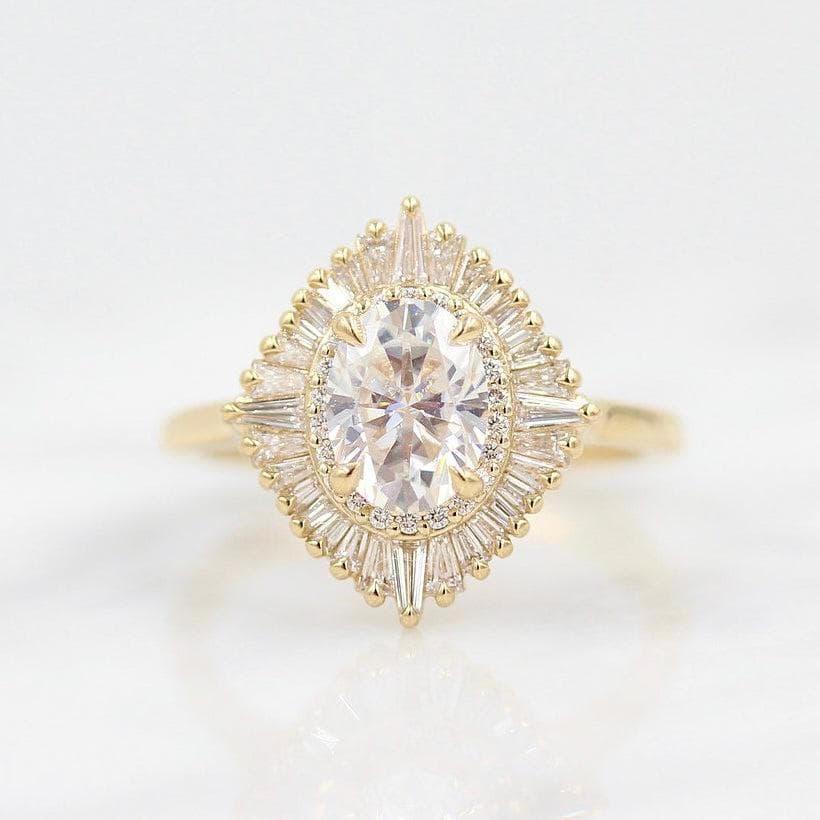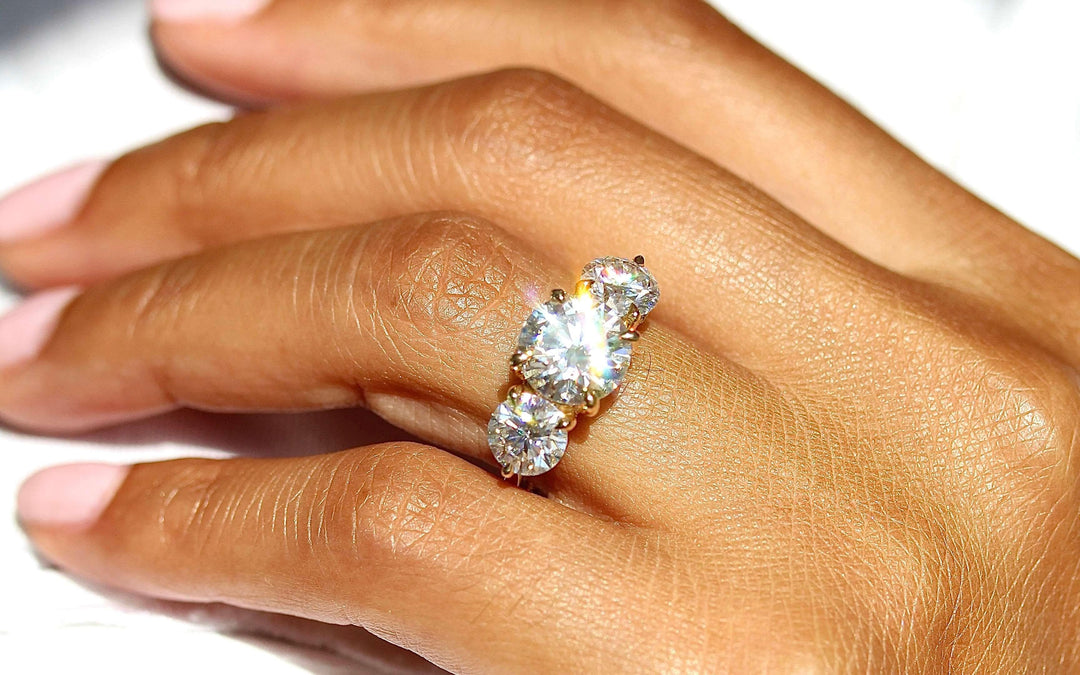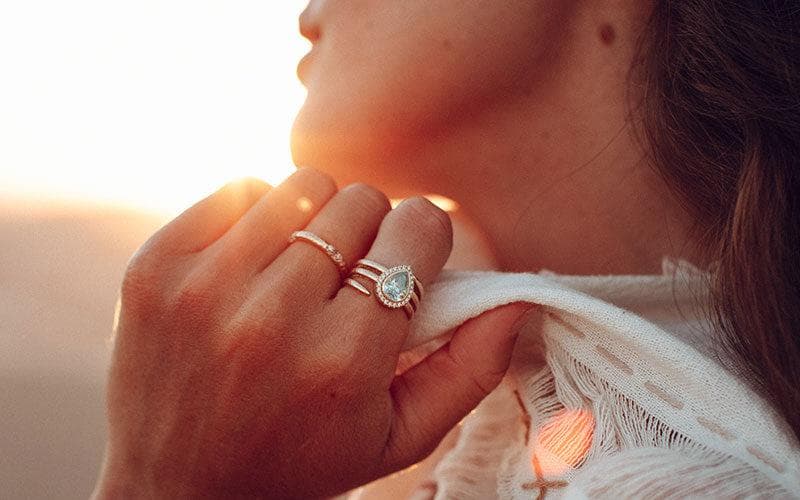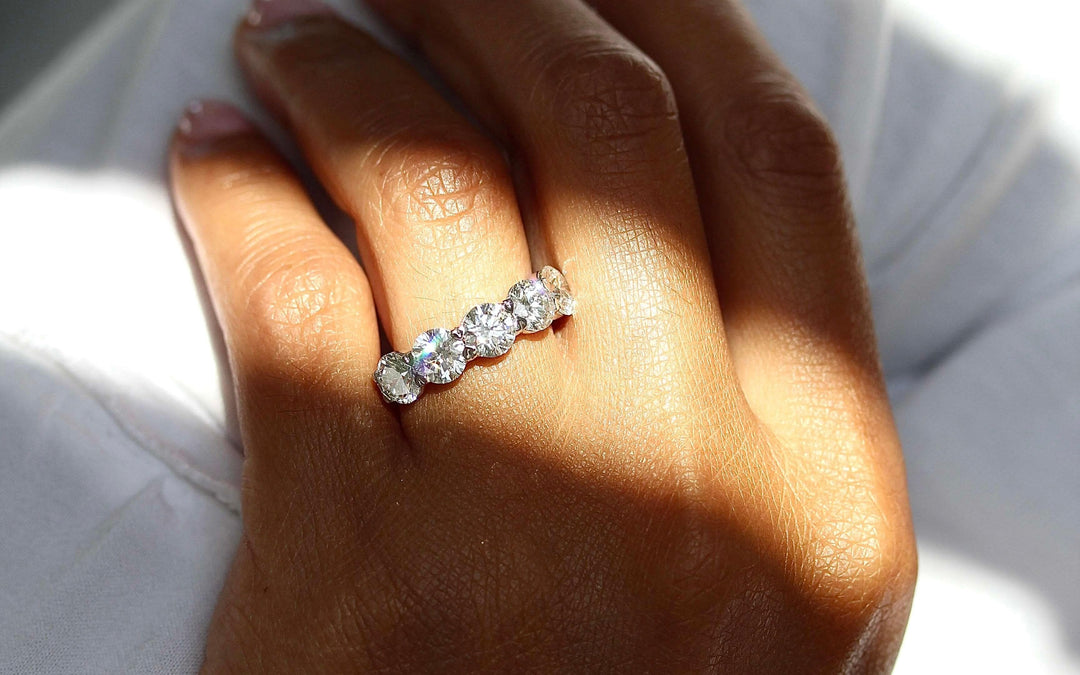Diamond Clarity and Color – What is Diamond Clarity?
Like each love story, every diamond is unique.
Some are even labeled flawless.
The 4 C’s that make a diamond distinctive are cut, color, carat weight, and clarity. To better understand diamond clarity and color, it helps to understand the process by which a diamond is created. Diamonds are not only the hardest material on earth; they are the only gem that is made of only one element – carbon. When carbon is exposed to intense heat and pressure, atoms unite to form a diamond. During this process, a variety of internal characteristics called “inclusions” and external characteristics called “blemishes” may occur. While diamond color is based on the absence of color, diamond clarity is determined by the presence or lack of these inclusions and blemishes.
Diamond Clarity Guide – How is Diamond Clarity Determined?
While no diamond is perfect, the purer it is, the finer its clarity. Together with carat and cut, diamond clarity and color affect the value of a diamond. Diamond clarity refers to the purity of a diamond and measures the internal characteristics visible. GIA (Gemological Institute of America) diamond graders use their trained eyes to analyze these internal and external characteristics by their size, number, location, relief, and nature or type, using 10x magnification. Using the GIA Diamond Clarity Scale, each diamond is mapped on a plot, with no two being plotted the same. Just like your fingerprint, each diamond is distinctive. Both diamond clarity and color are based on a scale defined by the GIA.

GIA Diamond Clarity Scale:
Flawless (FL)
In a flawless diamond, no inclusions or blemishes are visible under 10x magnification. These diamonds are extremely rare, with only 0.5% of all diamonds found in this category.
Internally Flawless (IF)
No inclusions are visible under 10x magnification. These diamonds are also incredibly rare.
Very Very Slightly Included (VVS-1 and VVS-2)
Inclusions in these diamonds are so slight that they are difficult for a gemologist to see under 10x magnification.
Very Slightly Included (VS-1 and VS-2)
Inclusions are visible with effort under 10x magnification but are considered minor.
Slightly Included (SI-1 and SI-2)
Inclusions are visible under 10x magnification and, often, to the naked eye.
Included (I-1 and I-2)
Inclusions are evident under 10x magnification and are likely to affect the brilliance of the diamond.
Diamond Clarity Guide to Inclusions. What Exactly is an Inclusion?
Inclusions and blemishes can result from several factors, including the diamond’s formation, the cutting process, its structure, and wear. Inclusions can be found completely enclosed within the diamond, or they may extend to the surface of the diamond. Some people refer to inclusions and blemishes as “flaws,” but many gemologists think of them as mere characteristics that make each diamond unique. Diamond clarity and color characteristics can be tools to help diamond graders recognize and categorize diamonds to give each diamond its individual identity.
The Five Most Common Types of Inclusions That Affect a Diamond’s Clarity Grade
Pinpoint
These inclusions are the most common type. They are on the surface of the diamond and appear as small black dots.
Needle
Like a sewing needle, these inclusions appear as a long, thin line.
Feather
Similar to a needle, these inclusions have small cracks from top to bottom.
Cloud
These internal inclusions appear as a group of pinpoints, resembling a cloud.
Crystal
These inclusions occur when a diamond is forming, when occasionally mineral deposits get trapped inside. These resemble a diamond inside of a diamond.
Learn more about diamond clarity and color.
Diamond Clarity Guide – How Important is Diamond Clarity When Choosing Your Diamond?
Diamond clarity and color affect how a diamond shines when illuminated. Fewer inclusions mean greater brilliance, while the lack of color means greater purity. Inclusions and blemishes may affect the sparkle of a diamond. A diamond’s clarity characteristics and color may be more noticeable in certain cuts of diamonds. For example, inclusions are more visible in an emerald cut than in a round brilliant, oval, pear, or princess cut. It is also important to note that blemishes found on the external portion of the diamond can be smoothed out. Some manufacturers have several methods to lessen the appearance of internal inclusions, but while this process can improve the look of the diamond, in some cases, it has been known to impact the diamond’s integrity.
Our guide to diamond clarity indicates that choosing a diamond that is at least VS-1 or VS-2 rating and above will ensure that your diamond will have no visible flaws. At Taylor Custom Rings, all diamonds are a VS-2 rating or higher.
Have you ever watched the sunrise on a cloudless morning when the sun glitters on the sea? Your diamond will sparkle like that.
Is There a Difference Between Lab-Grown and Mined Diamond Clarity and Color?
At Taylor Custom Rings, our diamonds are 100% real lab-grown diamonds formed above ground instead of in the earth. It is impossible to tell the difference between mined and lab-grown diamonds, unless they are laser inscribed with their origin. Both come in different cuts, have the same characteristics of diamond clarity and color, and rely on the same grading scale. There is no difference in the brilliance and sparkle of a lab-grown or mined diamond. When you choose a lab-grown diamond, you choose a diamond that is better for our planet and the people on it. You are unique. Your love story is unique. Your diamond will be too. Browse our collection.














